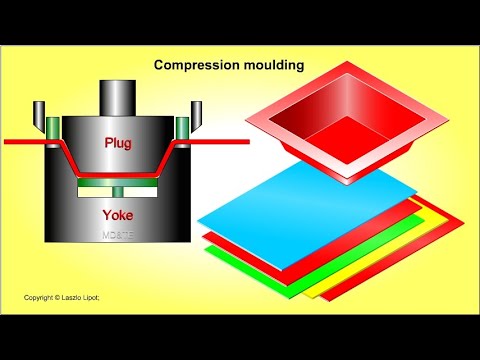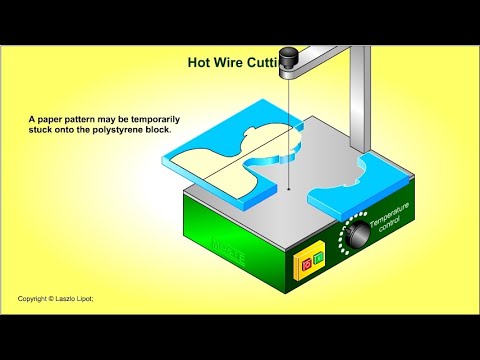Cambridge Design and Technology students have to be familiar with how to shape and form plastic using a range of different methods. This article introduces various plastic forming processes, including vacuum forming, blow moulding, injection moulding and so on, helping students prepare for examination questions on this topic.
Vacuum forming
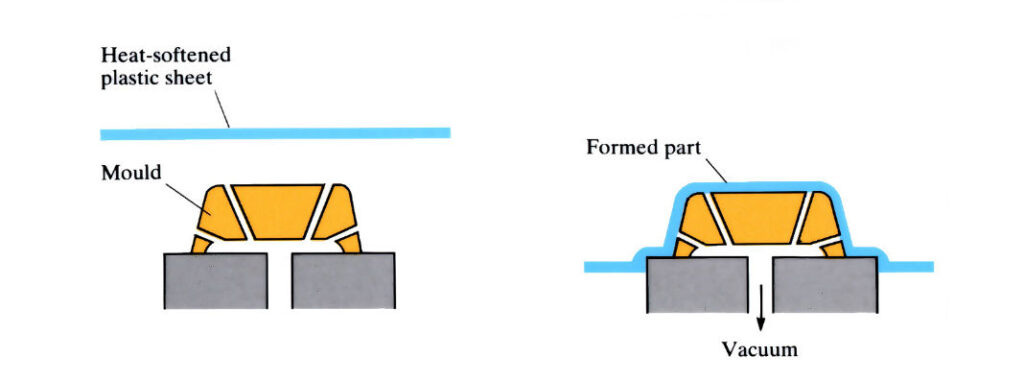
- Sheet is heated and sucked down around a ‘former’ (mould)
- See detailed information about vacuum forming
Shrink wrapping

- Wrap product with plastic film (i.e. PVC or PE)
- Apply heat using a heat gun or pass through a heat tunnel to warm the plastic
- Plastic shrinks and contracts, pulling tight around the product’s shape
- Forms tight protective seal
Laser cutting and engraving

- File created using CAD software such as Techsoft Design or Adobe Illustrator (different colour used for cutting and engraving)
- Sheet of material placed in bed of laser cutter, depth set correctly
- Extraction fan turned on
- File sent to laser cutter, ensuring to enter speed and other settings as appropriate for that material according to manual
- Material laser cut / engraved and lifted from bed, removing all scraps and debris
Vinyl cutting
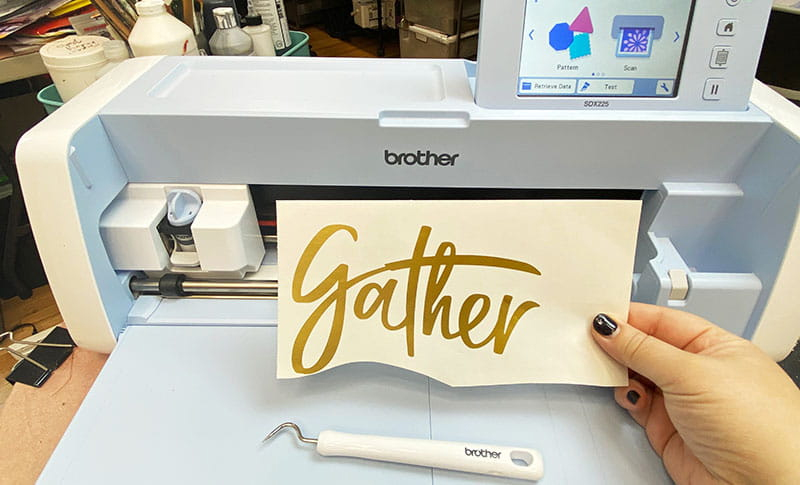
- Create image / design using CAD software such as Adobe Photoshop (cut lines on different layers to image files)
- Import into software that links to vinyl cutter
- Load and cut self-adhesive vinyl
- Weed out excess parts (unwanted bits / off-cuts)
- Peel and attach vinyl to surface
Blow moulding

- Molten tube of plastic lowered into a mould
- Blow air in through tube, so it inflates and presses against the walls of the mould (like blowing up a balloon)
- Cool and harden
- Open mould and remove
Injection moulding
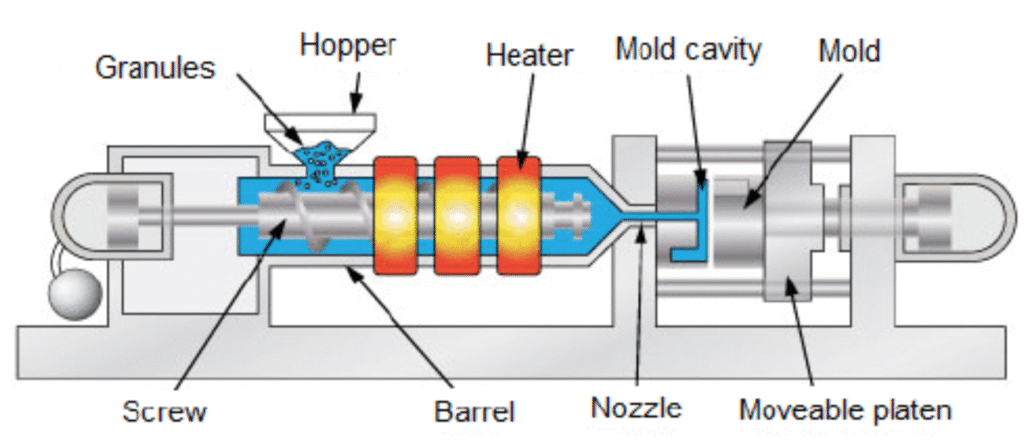
- Heat plastic pellets until they become liquid
- Inject molten plastic into a closed mould using high pressure (two halves of mould that clamp together)
- Cool and harden inside the mould
- Open mould to release the part
Extrusion
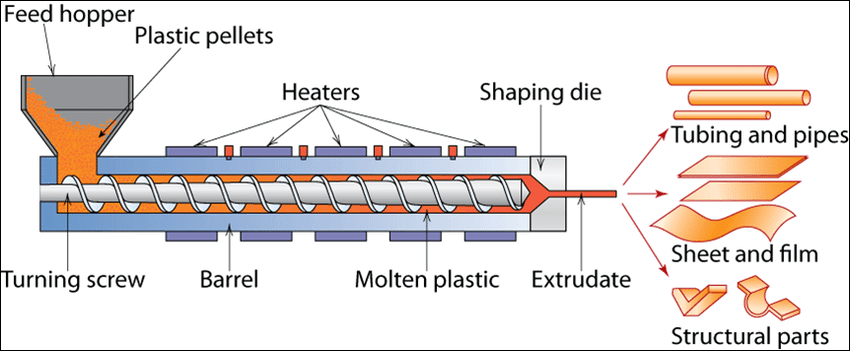
- Push molten plastic through a die with a shaped metal opening using a rotating screw
- Continuous shape emerges – a long, continuous profile matching the shape of the die (like squeezing toothpaste from a tube)
- Plastic cools and hardens as it moves out
- Cut to length as required
A die is a pre-made metal plate or block that shapes material – sometimes by flowing through it (hole), sometimes by cutting it (sharp edge – i.e. a die cutter), and sometimes by pressing/forming it (solid shaping surface).
Compression moulding
3D printing

- Create digital 3D model using appropriate CAD software such as Blender
- Save file as STL file
- Slice into layers using software linked to 3D printer such as Bambu Studio and add ‘supports’ as necessary
- Send file to 3D printer which heats plastic filament until molten and prints model layer by layer
- Remove printed item, clean the build plate and remove any support material
Line bending
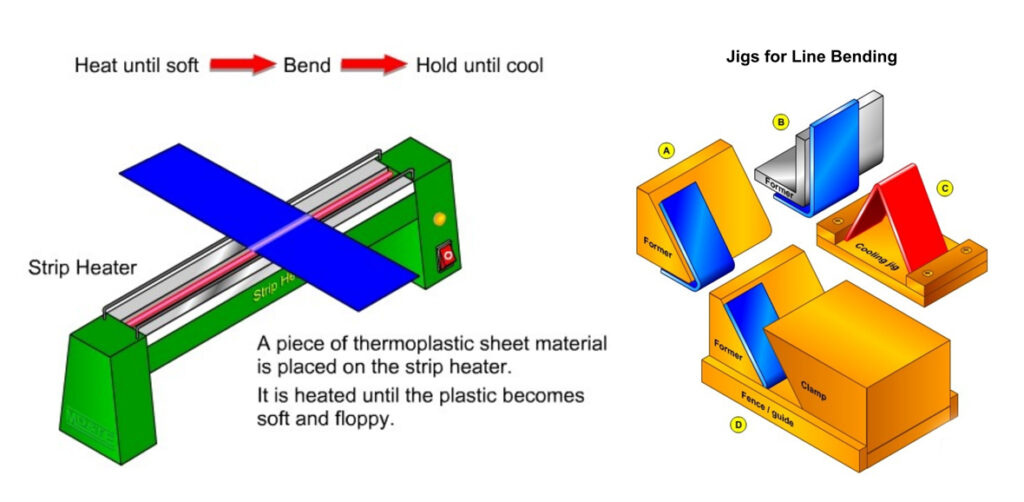
- Use a jig and/or former to help bend and hold the item in shape while it cools
Hot wire cutting
Expanded polystyrene can be cut using a hot wire cutter, but fumes are toxic (forced air-extraction must be used and never do when wire is red-hot, as melts it too much, decomposes, toxic fumes, and fire risk).
Manual cutting (scissors or guillotine)
- Only suitable for one-off creations, or very small batches
